THESE STORIES WERE FIRST PUBLISHED ON THE CHANNEL4 WEBSITE.
Profiles of The Mighty Boosh, Faris Badwan from The Horrors; Fee Doran, designer for Madonna & Kylie; writer & actress Sophie Woolley; Mr Holy Moly; digital maverick Jonti Picking; designer & musician Jonny Halifax; female director Amanda Boyle; photographer Charlie Gray & doctor of fabric Julian Roberts.
J’ADORE FARIS: ETCH A SKETCH
Another rock star has entered the art arena. Kirsty Allison digs out the latest recruit, Faris Badwan (aka Faris Rotter) from The Horrors.
Also of interest
The Horrors
MTS
Rehab 99
On auto Pilot
“I can’t seem to do any work unless I’m under pressure,” announces the very tall Faris Badwan (aka Faris Rotter) from a rooftop on Hoxton Square.
There are two days left before his first exhibition of illustrations in a new gallery on Brick Lane. With a Pilot pen swinging from his neck, joined by a white fur covered lighter and all manner of Victoriana regalia worn in a haute urbane style, he suggests that Pilot should be supplying him with free wares.
“Who knows, maybe that’s my ultimate goal, to get free pens. Actually that would suit me fine”
Close-up
“When they get blown up, you actually get to see the texture of the pen. The whole point of it is to put it under the microscope.”
As he poises one leg artfully across the other, sitting at a 45 degree profile to the camera, Faris, frontman to the inimitable five-piece, The Horrors, has a presence of aloof genius. His eagle silhouette carries an art school confidence.
We sit at the same level as the flocks of cranes that are creating a new skyline. This is Faris’ former hood: the place that gave birth to his legend. He’s here to have these stylised and heavily worked books scanned before they’re enlarged for a series of limited edition prints.
“When they get blown up, you actually get to see the texture of the pen. The whole point of it is to put it under the microscope.”
The pages contain words and beginnings of poems or lyrics, atomised between spirals and energy lines that shape mini-stories and tales .They’re magical nets, webs that link and weave and wave.
“It all comes from the same place,” he discloses, “I suppose,lyrics are drawn from the drawings I’ve done. They tell stories. Maybe not apparent ones but there’s always some sort of process behind it.”
Getting in on the act
“In all honesty, I really love the course and I’d like to go back, but I’d be equally happy not to go back as it would mean I was doing alright in this field.”
Pete Doherty’s syringe art exhibited recently in West London with £60,000 price tags, enough for a few good nights out. Perhaps now that records fail to sell enough to rack up rock star mansions, art is offering the alternative.
Ronnie Wood, David Bowie, John Lennon, Iggy Pop – there’s a history of one art form feeding the other. And from looking at the William Blake-esque doodles, it becomes painfully obvious that this is the case.
“I did go to St Martins, technically I’m still there,” Faris remarks. “I’ve got the option to return. I’m studying illustration. In all honesty, I really love the course and I’d like to go back, but I’d be equally happy not to go back as it would mean I was doing alright in this field.”
Long road ahead
“I think you can only get so big without compromising your artistic principles.”
So, the band, man. He feels he has felt the biggest rush of success already, about a year ago.
“The amount of people you play to doesn’t just increase infinitely. It goes very fast, then you reach the natural size your band’s going to be.”
“We haven’t quite reached that size yet but y’know, bar massive unexpected commercial success, there is only a certain size that you can be and that’s certainly something that we’re happy with. I think you can only get so big without compromising your artistic principles.”
Without the make-up of the Sisters of Mercy, or as much hairspray as Robert Smith, and with the ironic humour of the 21st century, they’ve got a long road ahead.
“We’re writing the next album. It’ll probably be out in March. We’ll release another single before the end of the year. We’ve got eight new songs after two weeks writing, so it’s going pretty well.”
Don’t mention art history
“You know, art history at school was so fucking boring.”
At art school one is taught the power of individual expression: “Obviously everyone has influences, but mine aren’t really conscious ones, in all honesty,” he admits.
“I don’t think that’s a good thing. I think you are more inspired when you’re looking at other people’s work, but I don’t really go to galleries or know a lot about artists. I know something about the ones I like, but I’m not really a fanatical student of art. I just like doing it.”
“You know, art history at school was so fucking boring. It was such a chore trying to find out when these people were born and I don’t care, y’know.”
He continues, “I hate painting. I used to like it but I find it so, frustrating. For me, I can’t seem to get the rhythm of painting because you can’t draw a straight line. You have to keep putting more paint on the brush and it’s not for me.”
“I like Marcel Dzama. Egon Schiele is probably one of my favourites in terms of human form. Jean Michel Basquiat… he’s completely different, although quite similar in intensity because he used colour.”
“I don’t. But I like the idea of it…horror vacui, the artform where there’s the compulsion to fill every bit of space on the paper. I think that’s funny, the name, the irony there…”
Is that partly where the band’s name came from?
“No not at all, I probably would have called the band Horror Vacui if I’d have known!”
MIGHTY BOOSH
Predictably, at a Q&A with the Mighty Boosh, open to the public/die hard fans skiving from work, there’s the profound question -would the Boosh rather be a band?
Uh, look at them, the new Peter Sellers & Spike Milligan…they roll in an hour late, pint glasses of Coca Cola disguising half a bottle of JD within, one of them’s wearing a cape, and the other is jostling around, half in awe of his own genius, half disgusted. Uh, yeah, they look like a band. And today’s onstage guests are the American guy, Dave Brown, who plays the show’s zookeeper, Julian’s brother who plays the ape, and the pixie-ish guy who’s like a friend or toy of Aphex Twin, Naboo. They’ve just come from some kind of performance/fan manhandling event at HMV and they’re about to go on tour, so are they a band yet? Y’know they make music? Bill Bailey – is he a musician?
But first, for this event which is being filmed for DVD prosperity by Baby Cow (Steve Coogan’s production company) and myself, somewhat sneakily, if feels, they start at the beginning. How did they meet?
“Was it in High Wycombe?” asks Noel Fielding?
“The Hellfire Club” suggests Julian Barrett
“The first thing you ever said to me was “Is your hair on backwards?” You had a suit on and little round glasses, do you remember?”
Julian, the jazz fan, then suggests it was the Enterprise in Chalk Farm, and then there’s talk of an Asylum, the play. Rich interrupts, says things like ‘You were shooting crack in your testicles’, whilst Julian makes subtle plays on words and Noel explains the male/female aspect important in any comedic duo…
“I am clearly. Yeah, I’m the woman, Julian’s the man”
Talking about the preparation for their first gig together, sponsored by Oranjeboom, Noel paints a Withnail and I picture of no heating, and no curtains – because they made them into costumes. Julian made a song with a shower head and a lamp, and those rubber shower head tap things for eyes. That went a bit weird, and the office workers at the gig thought them a little surreal, so they invented some zoo keepers and put potted plants all over the place.
That turned into a pilot, half with audience. Then it went on radio, and then TV, and then they were doing Brixton Academy, and now they’re doing Wembley Arena. It should pay the bills. It’s about getting the props the right size, they say.
A member of the audience asks the band, sorry, comedic duo with session guys who are really part of the group, what sort of album they’d all be; Noel obviously chooses the Stones, Exile on Main Street, one of the best albums of all time, but then, in his bimbo insecurity retreats saying that he’s probably a little more Milli Vanilli. Julian Barrett goes for Bartok, the mad mathematician classical guru.
Mike Fielding, Julian’s brother chooses Cypress Hill. Dave Brown, the smartarse, goes for Chaz and Dave. And rightly so. Rich then opts Celine Dion.
The Boosh have the raconteuring spirit of all those who spend time on the road, they are quick witted, and at each other like squabbling siblings.
But they’re still after the golden chalice. Yes, they would love to do a film. “Do you think we should do a film?” Yes, scream the audience…and what we have to look foward to is a bit Wizard of Oz, a bit Sinbad…Clash of the Titans is good. For Julian, “Anything by Bartok”
Repetition as much of a cornerstone of modern comedy as this band are themselves.
FULL TRANSCRIPTION IN THE FICTION & POETRY (and other writing) BLOG…
CELEB COUTURE
When a popstar/rockstar wants a mega wattage outfit, they can’t go wrong with the Mrs Jones label. Kirsty Allison stitches together this designer’s story.
Suits you
Rocksuits, popsuits and Scissorsuits, Fiona (Fee) Doran’s sewing machine has stitched a compilation album that hits all the peaks of the last decade’s visual music history.
From Kylie’s white comeback mega-hood to The Darkness’s all-in-one beyond-ironic spandex, the girl responsible for the looks that make popstars rock, and the Mrs Jones label, sits in front of me in her West London kitchen creating a couture tale of her career thus far.
Look like a star
“London’s club culture was our home, man. Fee was styling bands in Hoxton, making clothes for shoots with Marcus & Mert and working on a collection called DoranDeacon.”
Fee is a charming, self-deprecating gal who I first met in 90s Shoreditch. She had recorded a track with Tim ‘Love’ Lee called Give Me A Bite of Your Kebab about her Southend upbringing.
London’s club culture was our home, man. Fee was styling bands in Hoxton, making clothes for shoots with Marcus & Mert and working on a collection called DoranDeacon with Giles Deacon whose label, Giles is now toast of the London catwalk.
She then had a head-over-heels love affair with Mark Jones, head honcho of Wall of Sound record. She had a child whose first word was leopardskin, got divorced, and kept the Mrs Jones name, strictly for business.
Fee is currently working on a Mrs Jones collection that takes wearable elements of designs she’s made for stars. This is being sold through the Mensah boutique on Portobello Road, and via their online shop. It gives mortals the chance to dress like pop heroines.
Fee’s first break
“You know who that was…Nick Rhodes from Duran Duran.”
Ext. Portobello Market stall.
‘Poshgirl’ accompanied by Stella McCartney: Oh I love your stuff, darling! Do you think you could make me something?
Fee: Ok, yeah, whatever, here’s my number.
Int. Poshland, making a bird some trousers.
Poshgirl: You must meet my boyfriend!
Boyfriend: What would you make me?
Fee: Oh, probably a little pink mod suit
Boyfriend: I like the sound of that!
Ext. Street outside Poshland:
Fee’s mate: You know who that was?
Fee: No.
Fee’s mate: Nick Rhodes from Duran Duran.
Fee: Oh! You think he liked the story about me sellotaping my gerbil to the record player?!
Dress me up
“When artists start out they just don’t have money, like the Scissor Sisters, and no one will lend them anything.”
Spilling on her first job with musicians, Duran Duran during their White Lines phase, Fee regales the learning curve of how not to style celebs.
“I made the awful mistake of saying, ‘Just tell me what you want and I’ll make it for you.’ They designed these gold plastic suits.”
After working with Duran Duran for six months, taking midnight crisis clothes calls, she then decided to do an opera. After a few years in the wilds of Hoxton she went on to work with international megastars.
“There was Zootwoman, Kylie, Goldfrapp, The Darkness. It wasn’t until I had a baby that I had to get sensible and work everyday and become normal really. It’s always been about making stuff from old stuff, mixing it up with vintage, then cutting up vintage stuff.”
“When artists start out they just don’t have money, like the Scissor Sisters, and no one will lend them anything. You phone up PR companies and they’re like ‘Who? What?’ not even TopShop would lend them stuff. So that’s how it started; if I can’t get it, I’ll make it.”
Mother/godmother/whatever
“Making someone an outfit is not just about the songs, it’s about visual entertainment.”
Switching to the topic of School of Rock, Fee admits, “It’s like being a fairy godmother. On School of Rock I had a vicar’s daughter, I was like, ‘Take yer plaits out love.’ That was brilliant!”
“I’ve done quite a few ads, Bounty ads, Halifax ads…they’re never much fun ‘cos there’s always that continuity shit. I like to go in and out.”
She continues, “Videos are the best really; take a big bottle of whisky and a cowboy boot as a decanter! It’s like being at a club: music going on, people getting dressed up, hanging out with bands and getting drunk, making them do naughty things.”
“Making someone an outfit is not just about the songs, it’s about visual entertainment…so they’re doing it for me in some ways.”
YOU’RE ASKING FOR IT
Who is Holy Moly and how did he position himself at the frontline of celebrity gossip with his website? Kirsty Allison uncovers the man who has a knack for getting the tittle-tattle before anyone else does.
Gossip guy
“Is that Kevin Lygo, the head of Channel 4 meeting with the head of Sky One?” asks Holy Moly.
He doesn’t shut up, like a grinning cruise missile his snout twitches with anticipation for gossip, power and media.
Finding Mr Holy Moly has been like a quest for the Holy Grail. His balaclavaed face is masked behind AKA companies and mysterious email addresses. After a tabloid style chase, contact is made with the media mogul, whose newly launched internet TV station has more higher concept content than your average red carpet clip
The man who is stealing the gossip gauntlet from PopBitch and has created the most successful schleb brand since Heat, is elusive, to say the least.
Man in the mask
“Arranging a meeting in his native environment, the place where he preys for his victims, he offers a full house portfolio of private members bars from around London to meet in.”
Arranging a meeting in his native environment, the place where he preys for his victims, he offers a full house portfolio of private members bars from around London to meet in. We settle on Chiswick House, part of Soho/Shoreditch House. It’s just down the road from his former work place, Sky News.
On arrival it’s complicated. “I’m here to meet Holy Moly,” I explain to the concierge. “He wears a balaclava”.
After a few mentions of the celebrity gossip he partakes in, there’s no way I’m going to be allowed upstairs. So I wait for the man in the mask. Zorro is minorly late, there was traffic en route from his office in Chelsea Wharf.
Mystery man unveiled
“I’m not a Perez Hilton wanting to be the star of the show. I’ve got no desire to present my name as the news.”
He’s a classic media-type, attractive, charming, and focused. He’s not wearing the balaclava, but a bristle of stubble and a confidence associated with these clubs.
He has all the style accoutrements of Media Man, an iPhone in one hand, and a Crumpler-type bag with a Mactop in the other. He is our era’s godhead, fusing new media, old fashioned Thatcherite entrepreneurship with loads of trite tittle-tattle about people who are famous for little more than being mysterious enough and freakish enough to get on a reality show.
I wonder if libel is the reason for his disguise, but he cites a more magnanimous answer:
“I’ve got seven or eight full-time staff, a pool of contributors. Credit isn’t all down to me. I’m not a Perez Hilton wanting to be the star of the show. I’ve got no desire to present my name as the news.”
“Secondly, if I was the only person it would make sense. But there are 150 people who send it all in as their own. I’m there to give props to the people who are sometimes risking jobs, and I can say my name and no one knows.” Schneaky.
The whole truth
“More fool them if they speak to me like a piece of shit. A journalist’s job is to let the public know the real truth.”
So Holy Moly could be anything: the dark shadow, the superhero of truth, justice against stupidity and freedom from idiocy.
“I appear as I am when I’m getting stories, as though I have no agenda… More fool them if they speak to me like a piece of shit. A journalist’s job is to let the public know the real truth.”
This frontline mentality is to be admired…it’s successful. Holy Moly has taken the web by storm. Its irreverent disrespect for the art of fame is uniquely humorous and sits as a welcome polarity to the reams of pap paparazzi cheapo jibes.
No stopping him
“We’re not trying to Dennis Pennis them, we’re just trying to point out to them the stupidity of their jobs.”
He remarks, “I see Holy Moly as being anti-celebrity. If there is some integrity to what these people are doing, fair enough. But we do champion people too. We first picked up on Lily Allen in 2004. We scooped Rhianna and Chris Brown, and the Mark Thompson and Jeremy Paxman biting incident.”
You what?
“Mark Thompson, head of BBC, bit a colleague when he was about thirty. Holy Moly got hold of the story through Jeremy Paxman’s team… So alongside publishing the bizarre, and largely unacceptable, Holy Moly is also agenda-setting, but equally irreverent.”
“We turned around to Kerry Katona and asked her if she’d dipped her chips in ketamine. We’re not trying to Dennis Pennis them, we’re just trying to point out to them the stupidity of their jobs.”
It’s not a direct money spinner either. It’s sponsorship led. And sponsorship doesn’t come immediately.
He mentions, “Server bills of £2.5K a month, then there’s a gap which can go on for some time. It’s a sponsorship led medium. It’s not intrusive, and people don’t pay for content.”
“But I don’t see why it should slow down,” he continues. “I’ve been doing it for 5 years. We could take it internationally, India Russia, Australia. The TV thing could be huge. Anyone that watches American Idol will love it. There’s no stopping the growth of the internet.”
And with a family to support, there is no stopping Mr Holy Moly. He’s honest. He’s in it for the money. And why not.
ONE HELL OF A GO
Jonny Halifax has witnessed the pioneering days of promos and has come through on the other side as a rock god of title sequences. Kirsty Allison meets the man making the coolest film graphics on the block.
Also of interest
Jonny Halifax
Jonny on YouTube
Whatver means necessary
Jonny Halifax is England’s rising rock god of title sequences. Born the son of a sailor, he looks like a wane Lemmy and plays a Mac like a slide geetar.
His recent work for Julien Temple showcases his trademark ‘handmade’ style of heavy folk art. He combines After Effects, Motion, drawing, photocopying, “whatever means necessary… the less software based trickery the better.”
Man of many talents
“Whether it’s music, film or art, it’s all a simmering collection of influences, thoughts, ideas.”
Under the daytime allure of The Royal Oak on Columbia Road there’s a backdrop soundtrack similar to Jonny’s own one man band:
“I supported this guy last year,” he comments, sipping on a Leffe. In an industry that relishes individualism, but excellence in only one area, we continue a debate started on email about the realities of being a creative with many talents.
Jonny is a musician who makes the coolest film graphics on the block. He has climbed the promo/ad/tv ladder to get here, kicking down sub-career paths from across the creative sphere.
“Whether it’s music, film or art, it’s all a simmering collection of influences, thoughts, ideas. This can explode into an expression of sound or image, which finds some kind of form. Finally you hone and edit it into a finished work.”
Rite of passage
“Having the front to give it one hell of a go, and hope nobody asked for too much back-up.”
So the medium might be the message, but the process is the same whether it’s a canvas, a story or a song. The medium could be…a jellyfish.
With a history in pop promos with acts like Lo Fidelity Allstars, Goldfrapp, SchwaB, Forward Russia and The Scare, he now sees those experiences as a rite of passage in filmmaking:
“Learning how to use a camera, organise a shoot, get on with other musicians and commissioning editors, make sandwiches en masse, put make-up on men, put up lights, broadcast formats… Well you get the idea… Oh yes, and directing, producing, and editing.”
“It helped that I was working with a like-minded bunch of gung-hos at the time. We called ourselves rather pompously ‘General Lighting and Power’, but that was what it was all about. Having the front to give it one hell of a go, and hope nobody asked for too much back-up.”
“I think that’s a good thing; DIY rules.”
Scrimp and save
“We grew to make probably better promos on a PD150 and load of software filters than we could on 16mm and a load of free meals in Soho post houses.”
General Lighting and Power was a Tomato-type creative cooperative founded by Jonny, Danny and Ezra (now directing at Serious Pictures) and Nic Clear. Located above Dazed and Confused’s offices in Old Street, they worked across the media arts and architecture. They also had a house band.
“When we started making promos the budgets were getting smaller and smaller – what was being made for ten grand in 1997 was being done for one in 2002.”
“Obviously record sales probably dropped off in this period due to the growth of the web, but in that time we grew to make probably better promos on a PD150 and load of software filters than we could on 16mm and a load of free meals in Soho post houses.”
This punk rock ethic, is partly why the collaboration with Mr Temple was a success.
Paving an alternative path in this field, it’s not surprising that Jonny stands out from the crowd with his iconoclastic style.
Jonny Halifax’s current film projects include gfx & titles for: ‘Tantric Tourists’, ‘Silent Sound’- a Jason ‘Spaceman’ Pierce DVD, an Edward Lear series and a Honkyfinger video.
DOCTOR ROBERTS: THE GEEK’S GOK WAN
How can you define Julian Roberts? Is he a filmmaker, fashion designer, conceptualist, culture vulture? Kirsty Allison tries to unravel the mystery…
Also of interest
JulianAnd
The SuperSuper
Blow
BBC Blast
JulianAnd blip.tv
Show Studio
Suits you
Julian Roberts, aka JulianAnd, is the alternative guru of fashion television, he’s the geek’s Gok Wan, and he’s definitely wearing some trousers. They’re pale black denim, if you’re interested…
A former RA student, and an honorary professor of Hertfordshire University (where he spent three years creating a course, a building and validating his ‘Tunnel Technique’- more of which shortly), Julian has shown 13 different collections at London Fashion Week since the late 90s under several different monikers.
Fitting it all in
“He collaborated with The Royal Institute of Mathematics, who see weird maths in his intuitive patterns, which, they tell him, use negative space.”
As the fashion host of BBC Blast, he serves daily trend missives from Hackney – home of the modern anti-hero. He is someone who will defy cash and the temptations of becoming an LVHM mega-brand for the thrill of the academic and satisfaction of pure art.
Other current projects include designing new vestments for the Archbishop of Canterbury (his dad’s a vicar – it’s all about who you know). He collaborated with The Royal Institute of Mathematics, who see weird maths in his intuitive patterns, which, they tell him, use negative space. He will be touring America where he’ll show people his Tunnel Technique/Subtraction Cutting as phase one, and go into nu wave marketing and distribution for the second phase.
And he’s also recently redesigned the Pizza Express and Nando uniforms. They’re pretty groovy too…mix and match, classic charcoals and blacks. Phew! He speaks quickly, he has to fit so much in his life.
Fashion and film
“I bounce between film and fashion. It’s quite elusive and I see it as a negative sometimes but actually I like being in between things.”
“I like to build something up, then kill it off. I’ll give it all away, destroy the soul, I sold all my patterns online for nothing as a way of moving on.” So he’s the Vincent Gallo of fashion.
“I bounce between film and fashion. It’s quite elusive and I see it as a negative sometimes but actually I like being in between things. Why shouldn’t a fashion designer do film?”I projected a collection on the Natural History Museum and got the people who put Gail Porter on Parliament involved.”
That was his first serious involvement with video. He’s since utilised many different techniques, combining old school 80s computer graphics, projecting them on models and then filming the whole thing and editing together in a very new wave way.
His hip use of video is evolving on the catwalk, although it is yet to cross over from off-schedule to official catwalk selection.
Traditionally in fashion, the clothes do the talking, but equally it is an industry that is famous for being the last to ditch the fax machine. Email has only really having been adopted by design houses in the last few years. So it is possible that JulianAnd style direction, combining video, catwalk and performance will become more widely adopted and integrated.
Stepping out
“We have relentless optimism. It’s about positivity, we’re there to challenge.”
JulianAnd’s other sideline is Super Super. He explains, “This is a loose group of artists, DJs, musicians. I’m creative director of the fashion show we do. We don’t rehearse, that’s part of it.”
“We have relentless optimism. It’s about positivity, we’re there to challenge. It’s about people being too scared to step out of normality and conventionalism, especially with terrorism and things like that. It can be oppressive.”
“I think Super Super is about doing it yourself, looking different. Why not take some risks, play some roles. It’s quite empowering, and I see young people doing that.”
Two seasons old, the SuperSuper show is famous for being extremely long and unorthodox. Combining several different designers, live gigs, and video, it’s like an excursion to the youth club party. The colours and sincerity are on a par with the nu-rave mood of designers like Cassette Playa and House of Holland. Yet this mood is calibrated into a whole movement.
Championing DIY
“When I was growing up in the Seventies, people sewed. Now people buy things from China and forget that these clothes are actually still sewn.”
“There’s a generation gap again,” he says, sipping whiskey sours in the basement of the CrazyBear in London. “When I was growing up in the Seventies, people sewed. Now people buy things from China and forget that these clothes are actually still sewn. I have people asking me, ‘How can I find ethically sourced clothes?’ The answer is make it yourself. I can show you how to do it in 20 minutes.”
Julian’s loathing for the identikit consumerist society we inhabit, and enthusiasm for the current youth cyclone of new invention is very on trend. He is in exactly the right place to be the face to champion the new era of DIY, innovation and individualism.
JulianAnd is fashionable, again. With another collection this season and with Namalee, muse and queen of SuperSuper….TV series, anyone?
WEBBILY WOBBLY: JONTI PICKING
HIT FACTORY
Why do people drop down to their knees at the mere mention of Weebl and Bob? Kirsty Allison meets the creator Jonti Picking.
Also of interest
UK Resistance
b3ta
Newgrounds
Albino Black Sheep
No flash in the pan
Jonti Picking is the Picasso of the digital art world. He’s also the Dali, the Chapman brothers and the Vic Reeves.
His regular instalments of uniquely stylised cartoons with characters who have pie obsessions or carry names like Prawn to Be Wild, give many a geek a reason to keep thinking in binary. His www.weebls-stuff.com site has more hits a second than Stock, Aitken & Waterman ever achieved.
A true Flash don, Jonti’s unique brand of (fairly base) humour proves that geeks are funny.
Okay we knew that, but advanced fans of his Flash toons can get into online chat, moving plots forward and some will even become collaborators, as several of his peeps have done.
He also has a top secret comedy series in development with Channel 4 and some very cute toys that make ideal gifts.
Give him some work
“My style has evolved a little with the greater freedom…I’m no Disney though.”
GEEK FACT: Brian Blessed who played Prince Vultan in Flash Gordon does voiceover in the Documentary That Is About Weebl and Bob, the story about how Jonti developed the legendary cartoon characters, Wobbl and Bob. So why does he use Flash?
“You can make pretty much anything with it, games to animations to web applications. When I started to use it waaaaaay back in days of yore, PCs weren’t as powerful and internet connections were pretty slow.”
” As a result what I used to make was fairly simple. I was looking to keep file sizes down and keep the animations running smoothly.”
“These days you can do a lot more including video and 3D. My style has evolved a little with the greater freedom and also simply by getting better at animating. I’m no Disney though.”
Fans may disagree. He is frequently hailed as a digi-god by new media folk. What does he say about that? “They should give me some work then… baby needs a new pair of shoes.”
Home boy
“It’s pretty cramped so we’re looking into moving into offices where people won’t mind me shouting ‘anus’ into a microphone at various points throughout the day.”
Still working from home, “in a bedroom has more wires and flashing things than NASA’s mission control”, Jonti admits, “It’s pretty cramped so we’re looking into moving into offices where people won’t mind me shouting ‘anus’ into a microphone at various points throughout the day.”
“It’s good in a way since you can work when you want and I’m often up ’til 4am doing stuff. It takes a fair bit of self-control though since it’s far too easy to just spend the day playing Portal or Halo 3.
The call from MTV
“Then one day I got a phone call from a chap called Paul (great guy) at MTV who said they wanted to show the series. I thought ‘hell yes!’ and quit to do that.”
Combining music, art and script, Jonti’s interest in all things internet was ignited whilst on a music technology course where one of the modules was using Director.
After working at a London based new media company, “building Flash stuff and various websites for some pretty big companies”, and designing the 3D maps for the first Resident Evil, Jonti’s move into animation full-time was by chance.
“I’d started Weebl and Bob and that had taken off surprisingly well. Then one day I got a phone call from a chap called Paul (great guy) at MTV who said they wanted to show the series. I thought ‘hell yes!’ and quit to do that… I never looked back.”
State of play
“I don’t know many clients who’d be happy with a level where you make an old lady crap herself.”
On the subject of digital art peers, Jonti enthuses, “I love the work of Adam Phillips (www.biteycastle.com), frankly no one can touch him at the moment. Chaps like Cyriak Harris, David Firth (www.fat-pie.com) and the guys I work with on www.weebls-stuff.com (Peabo, Drewmo) are all kind of growing up together making Flash toons.”
“It’s really getting interesting these days and production values have shot up incredibly.”
Funding much of his fun work by corporate work, Jonti has worked on a series of ads for Anchor Butter, Sesame Street (yes, that’s Sesame Street) and done titles and links for a show called Totally Viral on Dave.
He says, “We’re currently making a massive game for T-Mobile which I have to say is a lot of fun and they are surprisingly cool about subject matter. ”
“I don’t know many clients who would be happy with a level where you have to make an old lady crap herself. As for the future we’d like to just carry on doing what we do and slowly grow.”
NEVER A GRAY DAY: HE GOT THE HUSTLE
What is it about photographer Charlie Gray that puts A-listers at ease? Kirsty Allisonexposes the smooth operator…
Also of interest
Charlie Gray
Stuart Smith
Tomato
Magnum Photos
Jetset lifestyle
Recommending film titles to George Clooney is not something everyone would feel comfortable with, but for Charlie Gray it’s like the first cup of tea in the morning.
Just back from LA, then Monaco, whilst fitting in romantic liaisons with an upcoming hot actress makes Charlie seem like the original 60s Blow Up caricature. He’s got the hustle, the looks and a prolific amount of style and good taste.
Exposure
Charlie had the usual battles with old guard, bitter lecturer types who bullied most, but seemed to have a soft spot for his potential capabilities.”
Born the son of a record retailer, Andy of Andy’s Records in Cambridge, his mum dealt in vintage clothes. He floated through school, excelling in what he put his mind to. A trait that continues to manifest itself today.
Studying a graphics and history of art degree at Anglia Polytechnic, Charlie found that his lectures clashed…so he went swimming.
Charlie had the usual battles with old guard, bitter lecturer types who bullied most, but seemed to have a soft spot for his potential capabilities. Then finally he fell under the wing of a caring photography tutor, Stuart Smith who introduced him to reportage photography. He also studied typography and design with John Warwicker from Tomato, the innovative graphics collective of the 90s.
This combination provided him with a portfolio which he hauled around the likes of theNursing Times and The Guardian before graduating to doing stills shots on TV dramas and reportage on advertising shoots.
Stuart Smith still edits Charlie’s work and he cites him, “one of the reasons I have been so successful so far”.
Rounded personalities
“You meet some actors and actresses who are surly and just show up; there’s a lot to be said for people who are still hungry.”
“I’m doing Jude Law next week,” Charlie says, before grabbing the phone to negotiate a rate for Hello! syndication. Mr Gray is very well-mannered…it’s something he’s learnt from hanging around the truly professional and successful of the world.
“I think when you get close to someone you realise how professional they are; polite, professional, well turned-out, great clothes, and that’s George Clooney being himself.”
“He drove himself on the first day. He’s always telling jokes, getting involved, looking at the screen. He’s interested in the whole process. He’s rounded. He didn’t make it till he was 35, so I’m sure that has something to do with it. He’s a complete gentleman.”
“You meet some actors and actresses who are surly and just show up; there’s a lot to be said for people who are still hungry.”
“Simon Cowell is another one of those people who has had success later on. He’s thoroughly professional”
Classic style
“When they are completely unaware…when they’ve let go of their status; that’s when you get great reportage.”
Whilst learning the ropes in TV drama, photographing the likes of Daniel Craig doingOur Friends in The North, Charlie began to build up his classic style of Magnum moments with stars.
He has worked on several BAFTA-winning series like the Trial of Tony Blair and the groundbreaking Riot films, as well as filling in for Sky and MTV.
“TV work can be fun. The director of Our Friends In The North, Simon Cellan-Jones did cartwheels on set to wake people up.”
Charlie possesses a style that balances contrasts and saturations beautifully. What does he think makes the perfect picture?
“Being there in the moment. It’s about encapsulating the whole mood of the event. If it’s celebrity-based, it’s about getting a key person talking to another person in their field when their guard is down. When they are completely unaware…when they’ve let go of their status; that’s when you get great reportage.”
On another level, in portraiture, you can see the connection is comfortable and there’s someone uncoiling.”
Sharp shooter
“I think giving away the mystique of how you work is a terrible mistake.”
“I think giving away the mystique of how you work is a terrible mistake,” Charlie confesses.
“I use a Nikon D3, the one that’s very good with high ISA/low light, and I shot the BAFTAs at 5000 ISA and there’s no noise. If I’d used my previous camera with its 1500 there would have been a lot of noise.”
“I don’t get nervous that often but for the BAFTA Film Awards I was in the auditorium for two hours preparing before everyone arrived. I’m not a sweaty person, but my palms were hot!…Being there in the Royal Opera House, I was thinking, ‘I have 20 minutes to get everyone.'”
Nevertheless, Charlie Gray thrives on the adrenalin buzz.
FEET ON THE GROUND
Kirsty Allison uncovers why this playwright is tipped for the top.
Lives the life
Sophie Woolley is amazing. Why? Well she’s beaten the legions of mashed up, self-proclaiming pint glass wielders who hang out in Shoreditch bars and Soho clubs preaching about the artistic legacies they’re going to leave for the world.
Sophie was always there, sitting, observing, polite, witty and erudite…but Sophie would be actually doing it, rather than talking about it.
Club together
“People who helped me along the way are club and literature promoters like Ernesto Leal, Sean Mclusky, Joe Muggs and Melanie Abrahams.”
Performing in nightclubs was where she started, reading poems that were slick, innocent and funny. She then wrote the DJ Bird column for Sleaze Nation, did some stuff for Shoreditch Tw*t and appeared in the Comedy Lab pilot on C4.
She says, “People who helped me along the way are club and literature promoters like Ernesto Leal, Sean Mclusky, Joe Muggs and Melanie Abrahams. I started off performing in cabarets and discos and writing specifically for those environments.”
“I even moved to Brighton for a year to work with Jamie Liddell and Matthew Yee-King – that went wrong though. I went off in a musical collaborative direction and it turned out to be a dead end. Even so, we did create some great things which really worked, but they were just moments and not enough.”
Run with it
“In the beginning I approached the running theme as a kind of smirking outsider – but then I ended up getting addicted to running.”
Her dark satire, When To Run sold out on a recent run at the Soho Theatre, and is still touring Britain. In June, her new play, Fight Face opens at the Lyric in Hammersmith. She’s also just signed up to work on some TV sketch shows. Irvine Welsh calls her ‘electrifying’.
When to Run first touched the surface as a poem. It then became a play in 2005 which features a handful of people, all played by Sophie. The structure is clever and the characters and accents are hilarious.
“In the beginning I approached the running theme as a kind of smirking outsider – but then I ended up getting addicted to running.”
“Feeling like a lemon”
“I just kind of stood on stage feeling like a lemon everyday – but despite having a bad time, the audiences enjoyed it…they didn’t know about the lemon stuff.”
When to Run then got financial backing a year later and Sophie took this, her first properly developed play, to the Edinburgh Festival.
She did 26 nights: “I just kind of stood on stage feeling like a lemon everyday – but despite having a bad time, the audiences enjoyed it…they didn’t know about the lemon stuff.”
Sophie felt a little unprepared: “I had never worked with a director before as I’d just done little stand alone monologues in the past and I hadn’t been to drama college.”
“I could do the voices okay but not the physicality of each character. I didn’t even have a costume. Just a frock and a chair on the stage.”
Can’t wing it
“If someone has paid to come and see me I’ve got to be better than good. There is too much dross out there already.”
But at these performances someone from the RSC spotted her, and managed to set her up with a female director from the National Theatre of Scotland. They then rehearsed, and rehearsed, and she sold out a stretch at the Soho Theatre last year.
From raver to rave reviews, she says, “I’ve realised I can’t do my best work alone. I can’t just walk onstage and wing it anymore, that’s not enough in my book. And it’s not enough for an audience.”
“If someone has paid to come and see me I’ve got to be better than good. There is too much dross out there already.”
Take control
“I have sci fi dreams about having a little robot who can do speech recognition and I can take it everywhere with me.”
Sophie’s performances are captioned for the deaf and hard of hearing. The words she has written are projected in huge writing onto a screen behind her just above an urban landscape. It’s very impressive and beautiful to have these magnified words beamed behind someone who sits on stage reciting them word perfect.
If GCSE students checked out Shakespeare in this way, it might all make sense. Sophie’s impetus for doing this is a hereditary hearing problem.
“I had been losing (my hearing) slowly for years. The end of 2001 was a bleak year as the effects of deafness on my life really started to hit home. But I picked myself up and learnt to lip-read and sign. So it’s a happy ending because I took control.”
“I have interpreters and stenographers to help me at rehearsals and meetings nowadays and that means I have to plan ahead and have a decent filing system for all the paperwork that comes with booking interpreters. I have sci fi dreams about having a little robot who can do speech recognition and I can take it everywhere with me.”
With the success of When to Run and all that training, Sophie and her robot are all set to become champions in the British high league of comics.
When to Run tour dates – 11 April Cardiff, 24/25/26 April Manchester; 26 June Hull; Fight Face at Lyric Hammersmith 19-21 June.
Amanda Boyle is a 34 year old director.
Kirsty Allison thinks she should be cloned.
Amanda has the credentials to inspire and lead a new generation as a filmmaker. Although she has only made a handful of shorts, each tick the right boxes (funding affiliations, philosophies and in production value) to allow the British film establishment to roll out the red carpet for her. Amanda’s most recent short opened at the London Film Festival, it was funded by the Film Council, BBC Films and FilmLondon, Pop Art stars Ben Milner from Son of Rambow and uses an inflatable puppet to deal with children and bullying in a very British setting, it was written by Joe Hill, Stephen King’s son. Imprints, her previous short film features a male doctor grooming a female patient with amnesia in a frightfully domineering fashion; the dreamlike Hotel Infinity follows the fantasy style of many Oriental films of recent years; and Heavy Metal Drummer from 2005 follows the tale of a young drummer in Morrocco, in a very filmic documentary fashion.
But despite BAFTA nominations, high-flying agents and critical plaudits Amanda Boyle tells 4Talent she’s finding the struggle to succeed exceptionally longwinded. Is that because she’s a she?
“I hate to make generalizations about sexes, but film is a male dominated arena, and there are a lot of women in production, rather than directing. Men can be very good at projecting confidence and when they’re younger and get carried into the system faster. I had the sense that I had to learn all the roles, and I’m not sure that’s the right way, but a lot of men I know go ‘I am a director’ and it’s about getting out there, and financiers and producers want to know that who they’re backing is confident, I felt I had to do a few shorts, and now I feel I’m up to the challenge of doing features.”
The progression from shorts to features is an established one for directors, as is moving from production to direction. Amanda broke into the British film industry as a post-production assistant at WT2 (part of Working Title Films).
“I left college and thought about film school but my dad died so I was quite pragmatic, I targeted film production companies I respected and wrote hundreds of letters. I sent three to Scala (Stephen Woolley’s company), eventually I got accepted at WT2. I worked there for seven years, it was fascinating as they work in the studio system. It’s quite a unique opportunity do that, it’s taught me to develop things thoroughly before approaching companies”
“I read Philosophy at Cambridge…I don’t like talking about that, it feels like a long time ago, it always gives the impression that film is cliquely, I didn’t have any contacts (her mother is a sculptor). But I did a lot of theatre at university, I had great lecturers, Peter Greenaway, Terry Gilliam, Danny Boyle, and it moved me from theatre into film, and the fringe work I’d done was collaborative, and so is film”
“My films are about the exploration of different ideas. With the shorts each one had a problem I was trying to solve, looking back they are personal films using metaphors and my journey has been to try and do that more directly. So now it’s more about being head on. I don’t know if it’s a philosophy but I’m trying, for example in the documentary I’m working on, to make it very inclusive. Each project has something I’m fascinated with, I feel I’m too early to know what defines me really, it’s just an inquisitive nature, I think.”
Powerful characters are a good place to start. Amanda’s documentary is about autism, based on the writings of Kamran Nazeer. She has also been developing a series of drama features with playwrights.
“Film is extraordinary for taking time, and if you don’t write there’s no money in development, that can wear you down and can effect you terribly. There are other people who have come from other areas, like visual artists, who seem to manage the crossover better, if people come from different disciplines it almost seems easier”
Amanda was selected on the Clore scholarship programme this year that has provided her with enough income to survive. She also scooped the rather tasty mentor of Stephen Frears (director of The Queen, Dangerous Liaisons, The Grifters and many more).
“I do feel there are lots of women coming up, I went for a drink with my agent (Sarah McWhinney at Curtis Brown), and she said most of her people are women. I know one girl who gave birth on the cutting room floor!
“If you want to be more than a token, it’s about the quality of the work, I’d be lying if it hadn’t been tough. If you’re trying to explain why you’re trying to do it and why the whole machinery takes so long, spending two years in development means working with actors is a luxury, I have devoted so much of my life to it I’m not giving up now!”
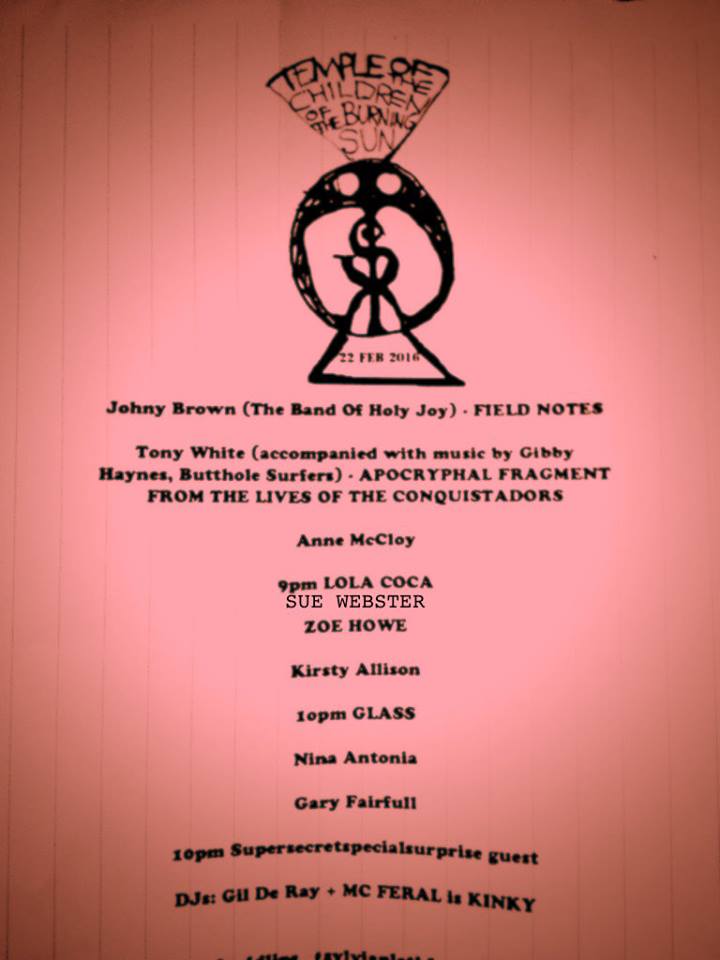
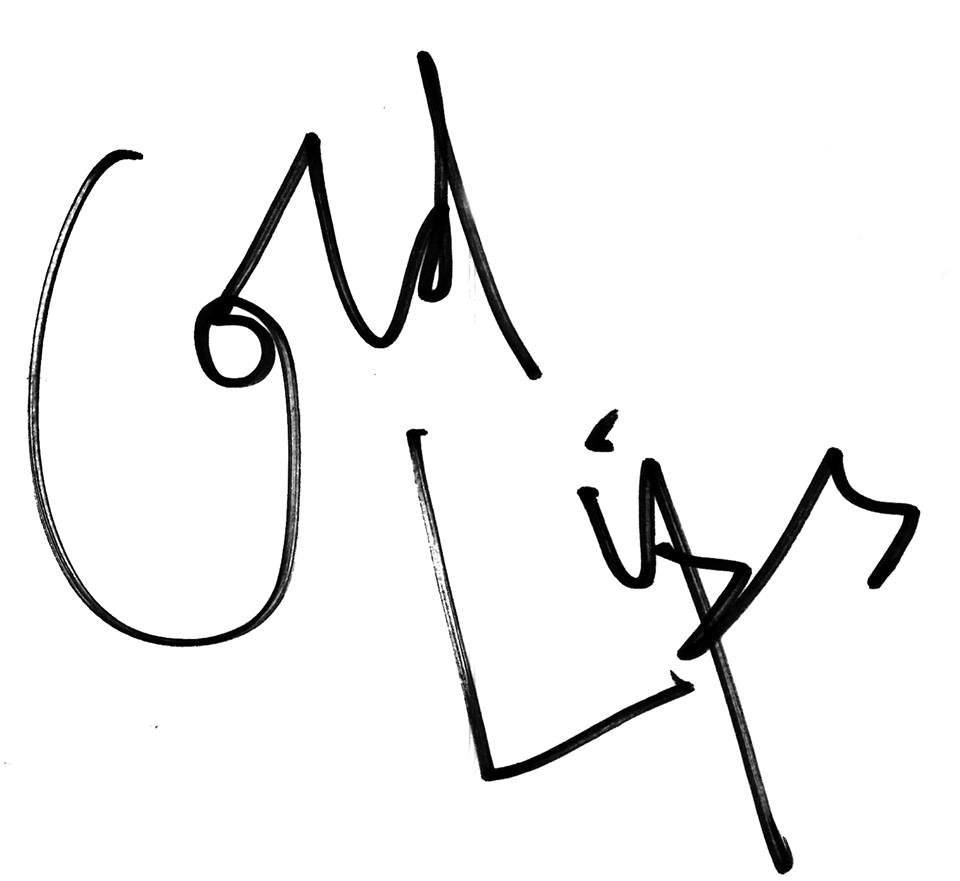
























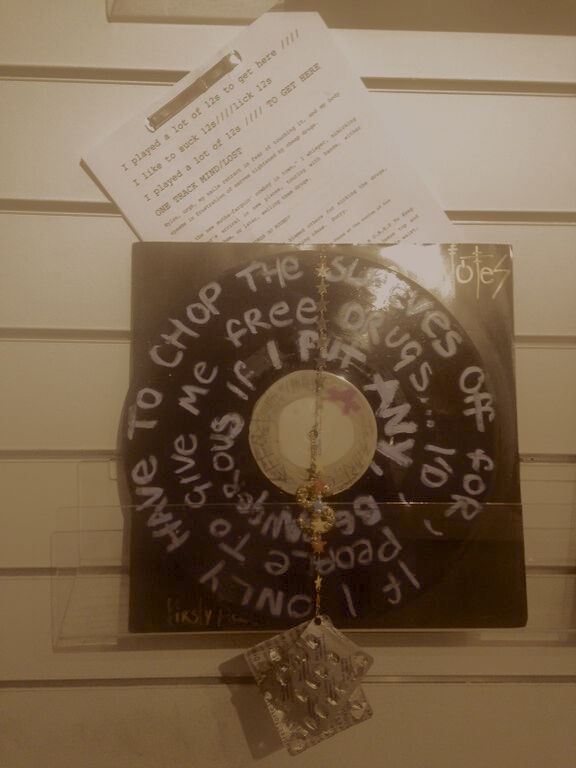

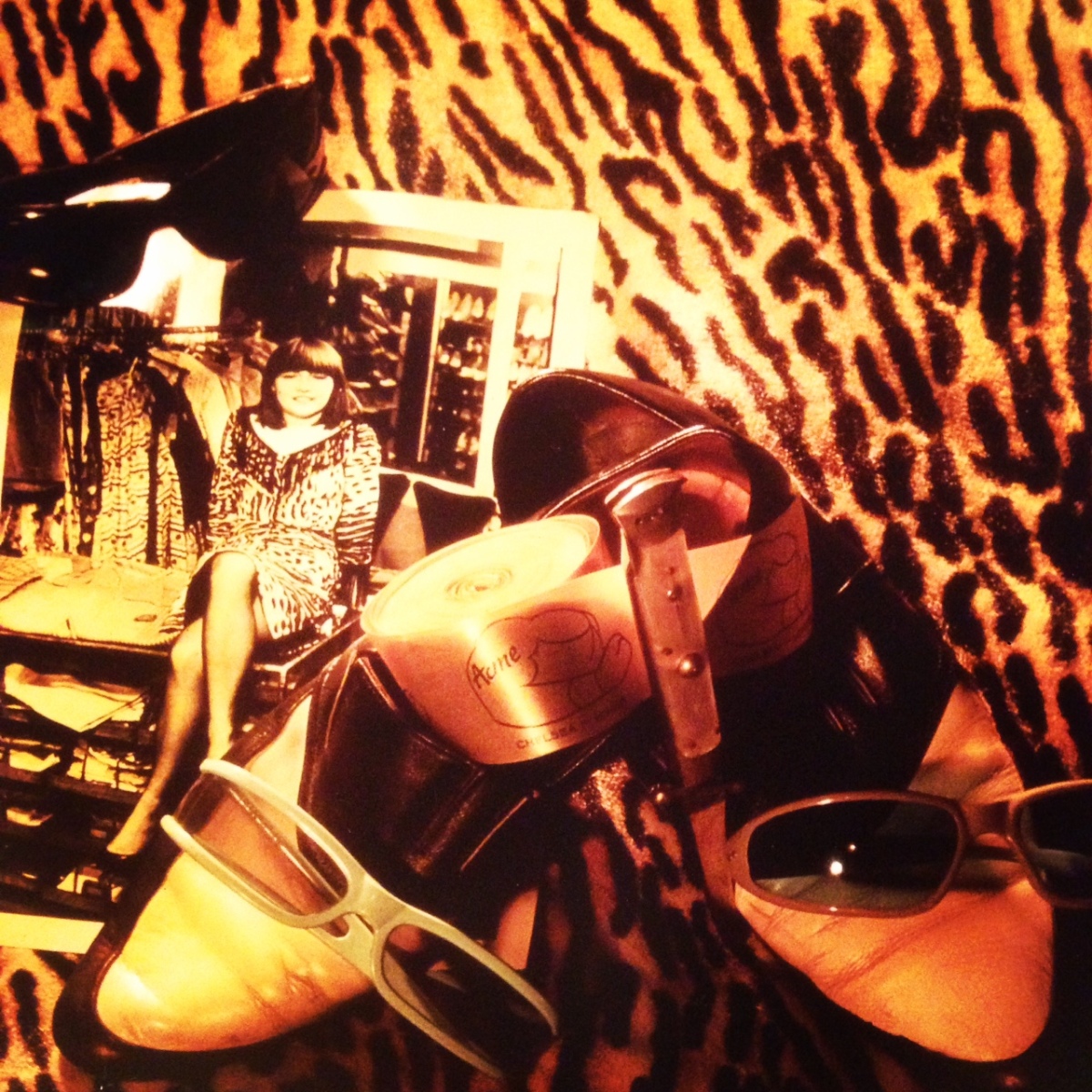





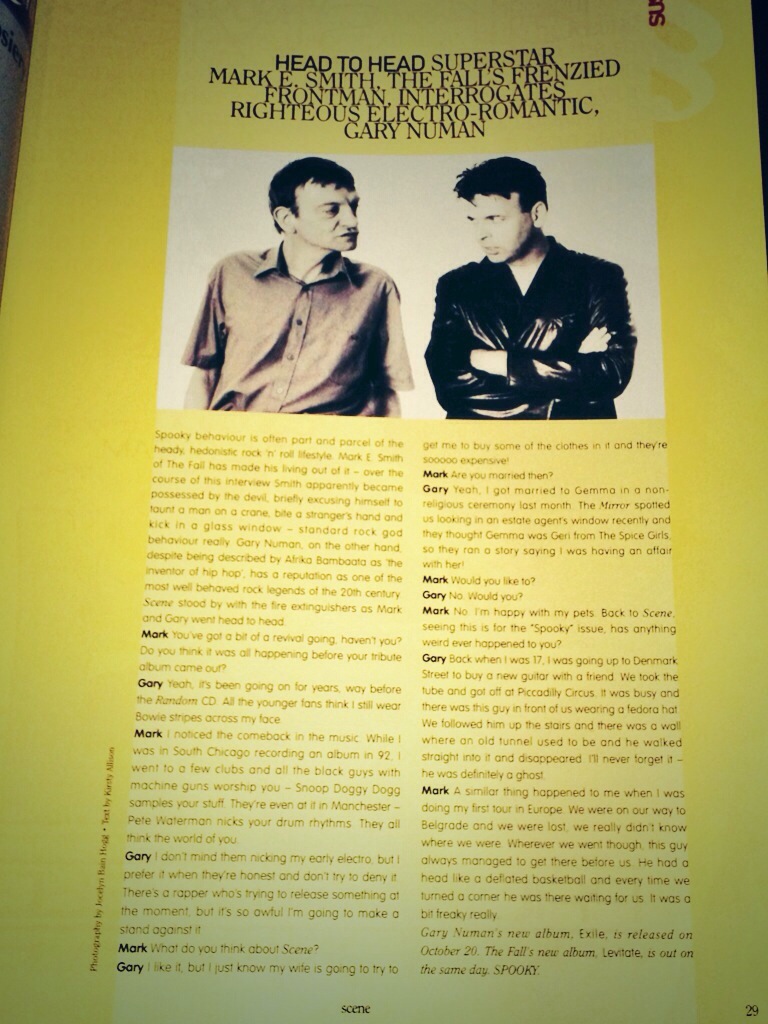











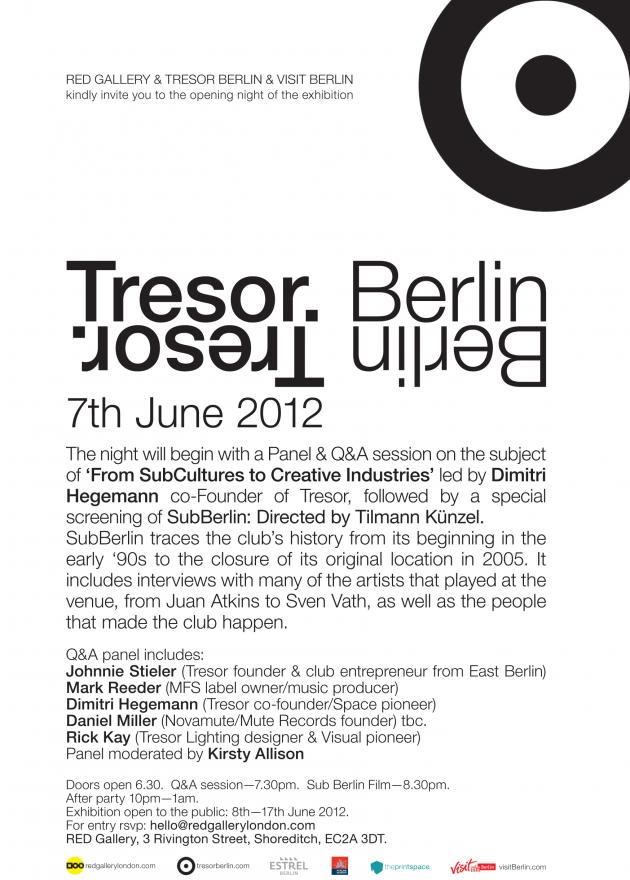
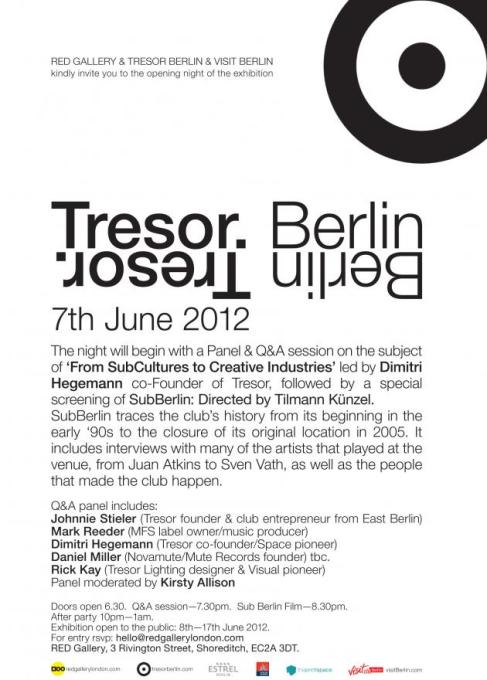






 Goth-folk: A walk on the dark side
Goth-folk: A walk on the dark side

























































